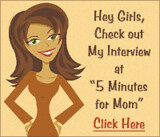 This book offers a reading program using the language-experience approach, which basically means that the words are derived from the learner's own experiences so that the lessons are more meaningful, interesting, and fun for the learner. The author, Patricia Logan Oelwein, does not claim this reading program to be the best one for EVERY child. The procedures described are guidelines and the program is meant to be customized. It could be a good supplement to other reading programs if one has the time and energy to create the materials for the activities.
This book offers a reading program using the language-experience approach, which basically means that the words are derived from the learner's own experiences so that the lessons are more meaningful, interesting, and fun for the learner. The author, Patricia Logan Oelwein, does not claim this reading program to be the best one for EVERY child. The procedures described are guidelines and the program is meant to be customized. It could be a good supplement to other reading programs if one has the time and energy to create the materials for the activities.Book Summary
The book is organized into 3 parts.
Part 1 (chapters 1 to 7) provides background information for the parent or teacher in order to understand learning differences among persons with Down syndrome, offers specific guidelines for teaching reading, and explains the program in more detail. These chapters describe certain factors that are usually associated with persons who have Down syndrome such as learning styles (for example, visual vs. auditory learner) and environmental (for example, family and community support) and medical issues (for example, hypothyroidism, autism, or other health condition) that may hinder or slow down learning.
Part 2 (chapters 8 to 11) provides the "how-to" for introducing the alphabet, phonics, writing and spelling using games and activities like matching and word bingo. Each chapter in part 2 has instructions on how to make the materials and how to play the game in a way that would encourage learning.
Part 3 (chapters 12 to 18) provides sample goals and objectives for expanding reading vocabulary and comprehension including action words, household words, feelings, colors, animals, food, and time. The goals, objectives, and activities in each chapter can be implemented as is or adapted to fit the learner's needs and interests.
The appendices contain a list of reading approaches, a list of other available reading programs, typical sequence for teaching reading, list of 200 basic sight words, picture cards, game materials and forms, and models for creating simple, personalized books. This book was published in 1990 though so the list of reading programs may not be up-to-date.
My Two Cents
I think that this reading program can be implemented with any child, with or without Down syndrome, as it is versatile and can be individualized based on the child's interests, learning style, how information or sensory input is processed, and individual progress. However, since words and sentences are from the learner's experiences, all the materials such as games, charts, flash cards, and books have to be custom-made. So this probably won't appeal to parents or teachers who have very little or no time to spare to create the materials.

The games and activities presented are designed for children in kindergarten and older. Matthew is only 2-1/2 years old and will go to school in October this year but I think this is a good time to introduce sight words, and possibly the alphabet. Matthew has the skills to identify, differentiate, and match objects and pictures so I'm going to push the envelope and teach him to identify words using the techniques illustrated in chapter 8 (Teaching Sight Words). So far, I've made 7 photo cards with words for Matthew to start with: Daddy, Mommy, Matthew, cat, milk, ball, apple. I plan to make a few more cards with words that Matthew understands or signs everyday, words that are meaningful and useful to him. The method for introducing sight words is very much like how Matthew's developmental therapist introduced the concept of matching so this gives me faith in trying it for myself.
Have you read it? What do you think?
Related posts:
Early Reading Programs
Matching
Vocabulary List and Speech








3 comments:
Hi Ria,
My daughter is seven now, but we have used this method and then used it to support the phonics instruction she has in school. She is starting to read and is SOO proud of herself. For materials support, check out the DSFOC.org and sign up for The Learning Program. They have terrific materials that can be printed out for free. Also, since Matthew is so little, you may be interested in See and Learn, which you can get through the DSF Online store, also accessible through dsfoc.org. It is also a picture matching kit that many people have liked. Good luck!
Hi Alisa,
Thanks for sharing your knowledge and experience with The Learning Program and See and Learn. That's so wonderful that your daughter is reading and sounds like she's enjoying her new achievement! It's always great to hear about other children's success with certain methods and gives me and other moms, who are just beginning to teach reading, a good lead into what would be worth trying.
Hi Ria:
This is a subject that is near and dear got me. I'm really not familiar with reading programs right now since my kids are older, but I think the habit of reading to your child every day really encourages him or her to want to figure it out for themselves. My kids would memorize their favorite stories, and then begin to read along with me- sort of like reciting. Eventually each one made the connection between their favorite stories and all that crazy gibberish under the pictures! Some early favorites were CHICA CHICA BOOM BOOM, THE MITTEN, GOODNIGHT GORILLA, and anything by Eric Carle. Have fun!
Post a Comment